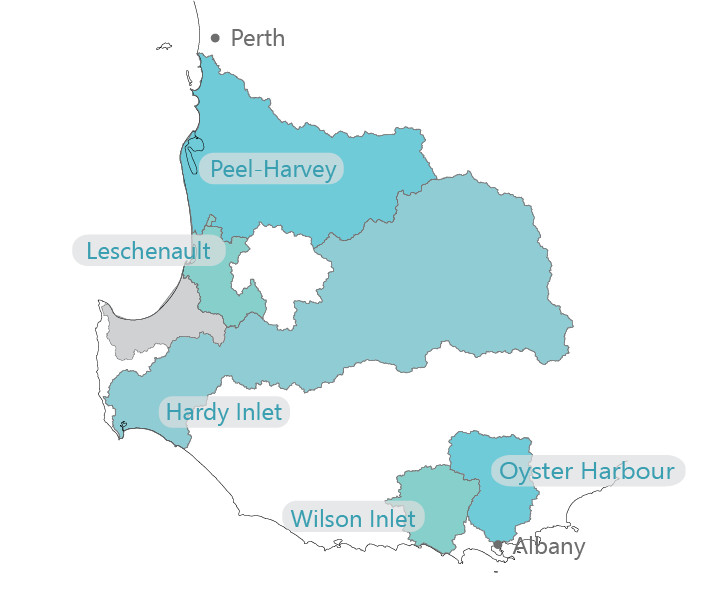Catchment monitoring and condition
Understanding the quality of water entering an estuary from each subcatchment allows us to recognise the source of high concentrations and loads of nutrients. The data is also used to construct catchment models which estimate the impact of different land uses and predict the effect of different land use and remediation scenarios in the future.
Catchments are monitored every two to four weeks and data is collected on each of the following parameters:
- Oxygen levels
- Salinity
- Turbidity
- pH
- Nitrogen
- Phosphorus
- Total suspended solids
- Flow rate (only from sites with a gauging station)
Results can be found here.

Other projects
- Better collaborative drainage management
- Booiyup - Centennial Park Wetland
- Brockman Park
- Capacity building
- Catchment modelling
- DairyCare
- Estuary modelling
- Estuary monitoring and condition
- Fencing and revegetation
- Fertiliser management program
- Investment planning for catchment actions
- Phosphorus binding clay
- River health assessments
- Seagrass monitoring
- Soil amendments
- Soil Wise
- uPtake
- Urban garden fertiliser use in Leschenault Catchment
- Yakamia Creek
- Z-Filter trial

